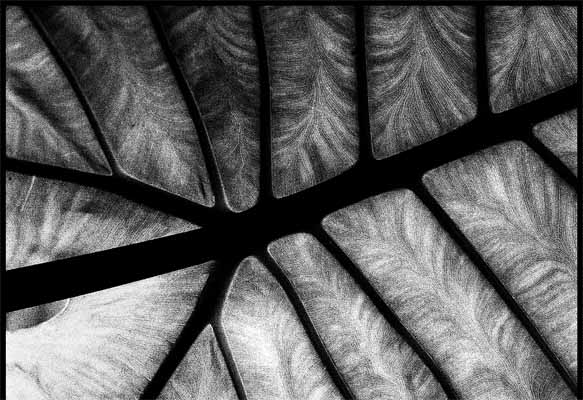5/07/2010
Silence Alive
On the occasion of my birthday (20. of february) I would like to surprise you with an article about me which is very kind to me. It was written by my favourite poet Zemlényi Attila the editor in chief of the periodical titled "Műút". The article was published at one time in the columns of "Irodalmi Jelen".
Silence Alive
To the photos of Bozsaky Dávid
If I were asked I would reply without hesitation that Bozsaky Dávid took these photos by his single camera in the outskirts of the shooting lodge in Ilmenau where Goethe wrote the Wanderer's night song on the wall. In a place where under the power of poetry - as Gandalf disarmingly tells- death is not the end of life but is another path. It is in a place where temporariness of life is followed by the act of adapting to the harmony of nature and to the order of eternal roundabout. You are not alone over there. Revelation is a painful act though. These legendary black and white creatures are observing and the shepherd is the forest. Deepness - sharpness. It makes the thought of Nietscshe trivial that whatever you look at it looks back at you. The glance of Bozsaky Dávid means the same to me. Reflection is its essence. There is no hanky-panky, coloured-fragrant, sugar-coated illusion imitating perfection. There are only emotionless, persistently observing microcosmoses with sharp, dashed, scalloped and organic middles and with dimmed edges. There are them and the wanderer.
Goethe's Wanderer's Night song in Henry Wadsworth Longfellow's Translation:
O'er all the hill-tops
Is quiet now,
In all the tree-tops
Hearest thou
Hardly a breath;
The birds are asleep in the trees:
Wait; soon like these
Thou too shalt rest.
Silence Alive
To the photos of Bozsaky Dávid
If I were asked I would reply without hesitation that Bozsaky Dávid took these photos by his single camera in the outskirts of the shooting lodge in Ilmenau where Goethe wrote the Wanderer's night song on the wall. In a place where under the power of poetry - as Gandalf disarmingly tells- death is not the end of life but is another path. It is in a place where temporariness of life is followed by the act of adapting to the harmony of nature and to the order of eternal roundabout. You are not alone over there. Revelation is a painful act though. These legendary black and white creatures are observing and the shepherd is the forest. Deepness - sharpness. It makes the thought of Nietscshe trivial that whatever you look at it looks back at you. The glance of Bozsaky Dávid means the same to me. Reflection is its essence. There is no hanky-panky, coloured-fragrant, sugar-coated illusion imitating perfection. There are only emotionless, persistently observing microcosmoses with sharp, dashed, scalloped and organic middles and with dimmed edges. There are them and the wanderer.
Goethe's Wanderer's Night song in Henry Wadsworth Longfellow's Translation:
O'er all the hill-tops
Is quiet now,
In all the tree-tops
Hearest thou
Hardly a breath;
The birds are asleep in the trees:
Wait; soon like these
Thou too shalt rest.
5/04/2010
Haunted by a face, or the mystery of eternal self-portraits
According to certain views of art history the artist at the beginning of his career, until he lacks his own evolved style, can only paint or draw himself instead of drawing portraits on others. According to other views this remains so during the whole artistic career as the artist gets his own character involuntarily into the completed artwork. It is like transmitting our DNS in a logic way on a piece of paper by means of a pen or a brush in our hands. Would a genetic relationship come into existence between the artist and the artwork? All right, let's try to decode this! The idiosyncrasy of certain components (e.g. handling the brush, conducting lines, the resources of motives) assimilates the completed artworks too. As far as here it does not sound strange as each artist has his own style. But what is the artist as a biological being? It would be an obvious explanation that our drawings resemble what we see the most in life. We see ourselves the least and only from a mirror which has the disadvantage of providing an inverse image but always from one viewpoint. Therefore painting our own selves always originates from an ancient, instinctive and subconscious skill, or if you like, it is part of our supernatural talent. Sure enough that there is no scientific answer for the question of eternal self-portraits mystery, moreover there is such a vagueness that nobody can give an answer whether which academic area will support this theory by further facts. Will it be psychology, genetics or ethology? One thing is sure that till then art history will be emitting further evidence of the mystery. However I truly don't understand how experienced professionals could nowadays be in fever apropos of the disputatious Mona Lisa misery. Let me illustrate my short conception again with the art works of Téglás István. If you do not know him and would like to get to know who should the exhibited statues and paintings resemble than visit http://www.teglasistvan.blogspot.com and watch him in the movie titled "Pear wood Hero".
4/28/2010
Netsuke statues grown large
It was really a good idea to come up with thuya and acacia wood. As I wrote it beforehand there are a great number of unfinished statues that Istvan made long ago and these statues are waiting for their future fate. Around the end of the year in October or in November he usually lines his uncompleted works up and he happily remarks the abundance of new statues he is going to have within a few weeks. There is only a few days work left on these statues indeed meaning one accomplished statue almost every day. I visited him this week-end and it was a gold opportunity to let him finish his uncompleted thuya and acacia statues. He also waxed the statues and I took pictures right away. The pictures are available on his web-site: http://www.teglasistvan.blogspot.com/. The thuya statue is actually a larger netsuke illustrating a playful little figure sitting on the ground with his feet in his mouth. It reminds me of my son who is just at the age when sucking his own tiptoes is just for the sake of play. But a statue has many faces. Unbelievable to say but the picture titled Generalissimo was taken of the same statue. The other netsuke was made of the famous wood piece called Ebony Angel. After a few chisel marks a face was evolved and the statue was ready. There was also the Faun, another acacia statue, waiting for to be finished. However nothing else happened that we concluded that the statue is ready this way. He might work on it more but it has so many forms in its virgin state that it would be a pity to remove these forms from it.
4/01/2010
3/31/2010
The secrets of driftwoods
Wood is a precious thing worth having in Africa. The locals mass at the shore as soon as the high tide withdrews to collect the gift of the ocean. The largest pieces of wood are sawn on the spot and carried home by wheel barrows. The nomadic sculptors of the Sahara mostly hunt for the fragrant thuya roots or for acacia wood. Acacia is a Genus of shrubs and tree belonging to the family of Magnoliopsida to the order of Fabales and to the Subfamily Mimosoideae of the family Fabaceae. It originally has bright colour and as the effect of the ocean and the sunshine it quickly becomes dark brown or almost black. It could be slightly distinguished from ebony wood. Thuya has been used for fuming during sacrificial or other ritual ceremonies beyond memory. Its name also originates from the Greek "thero" which means to sacrifice. The thuya root of the nomadic sculptors is not only used for its long lasting fragrance but also for its beautiful burr. The shiny, glittering surface is not the result of varnishing. A piece of cloth is soaked with pure alcohol and a pebble is covered by this cloth. The surface of the wood is rubbed with it until the desired effect is reached. The statue of Téglás István titled "The Redish Design Face" was made of Moroccon acacia wood.
Subscribe to:
Comments (Atom)





















